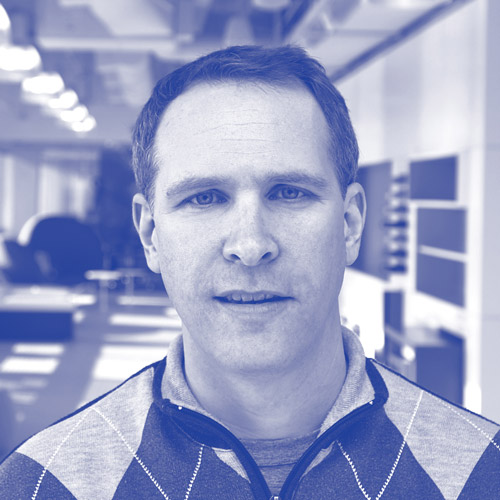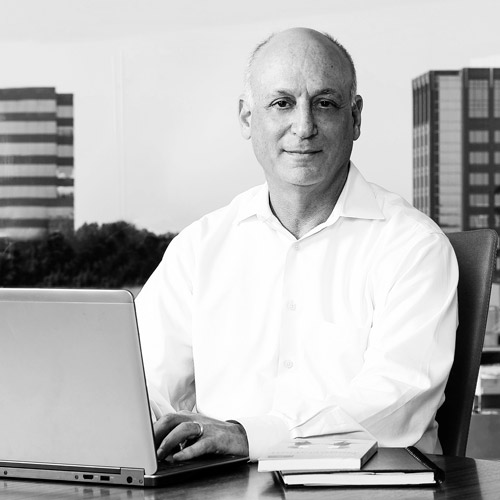Gary Hayes is fortunate enough to have expertise in engineering, information technology, and business, or in other words, a perfect combination of skills that have directly impacted the success of CenterPoint Energy. “I’m an engineer by education, and I’ve had experience in my career to not only be well-versed in information systems, but also gain experience in business operations,” says the senior vice president and chief information officer. “All those experiences shaped how I can best help CenterPoint as it looks toward the future.”
CenterPoint Energy’s core operations include electric transmission and distribution, natural gas distribution, and energy services operations. The utility serves 3.4 million gas customers across six states and delivers electricity to more than 2.1 million customers in the greater Houston area. Operating more than 55,000 miles of electric transmission and distribution lines, CenterPoint Energy also has more than 120,000 miles of natural gas main and service lines.
Hayes compares his business to the telecommunications industry. “Think of your cell phone service. You can buy your service at numerous retail stores, and then the communication infrastructure is provided by somebody else,” Hayes explains. “We’re the infrastructure provided by somebody else. We carry the energy to the customer for retail energy providers, measure the energy provided, and provide those measurements back to the providers.”
Hayes earned his bachelor’s degree in civil engineering from Oklahoma State University and started his career soon after in 1980 at Oklahoma Gas and Electric Company, where he remained for eighteen years. “I did everything from power plants to facilities to transmission lines,” he says. “The last couple of years I was there I had the opportunity to move into technology. I helped deploy enterprise resource planning (ERP), an IT system that provides core business transactions to all the people involved in these operations. This married my engineering and business operations experience to technology.”
Hayes spent the next ten years at Deloitte Consulting, where he worked with large and small, regulated and deregulated, and electric and gas energy companies. During his tenure, he provided consulting services on strategy, operations, and large-scale implementation of solutions for customers, field services, and the enterprise.
He then moved to TXU Energy, a retail energy provider, where he was vice president of applications. For three-and-a-half years, he led the development, deployment, and operations of an IT portfolio of systems. “At TXU we did a wholesale replacement of our customer systems, including our website, interactive voice response (IVR) and call center, and were responsible for our marketing and customer services,” Hayes recalls. “In a competitive energy footprint, customers talk with their feet; if they don’t like the service, they’ll switch companies. We had to come up with innovative approaches to offering them energy.”
In 2010, Hayes accepted his current position as SVP and CIO at CenterPoint Energy, where the focus is to create an “intelligent energy future.” This means using leading technology to deliver customized, environmentally friendly energy solutions, Hayes says.
Since 2009, CenterPoint has deployed large-scale operational, information, and customer technology to this end. One example is its deployment of smart meters, which remotely measure energy consumption every fifteen minutes. “Before smart meters, someone would have to come to your house on a monthly basis, read your meter, and bill you for whatever you used,” Hayes says. “Now we have electronic meters that remotely read and transmit information at specified intervals. We went from 88,000 meter readings a day to more than 220 million meter readings a day. That added information—understanding how a customer consumes energy—allows retail electric providers to offer creative energy plans to customers.”
These plans may include offering free nights or weekends, or the choice of green energy, he says. With smart meters in place and an advanced distribution management system (ADMS), the company knows if someone’s electricity is on, which helps CenterPoint respond during outages, he says.
“In the past, if your lights went off, you would sit there and wait for them to come back on, and if they didn’t, you would call in that your electricity had gone off,” he says. “Today we know if your electricity is off before you call and can remotely restore it or send crews out to fix the problem.” As of April 1, 2016, starting in 2009, in the Houston, Texas, area, CenterPoint Energy has restored 1.5 million customers’ electricity without a phone call and saved more than 134 million outage minutes, according to Hayes.
CenterPoint’s smart technology is also environmentally friendly. By eliminating the need for a vehicle to drive to customers to obtain readings, CenterPoint Energy has prevented more than thirteen tons of carbon dioxide emissions from going into the atmosphere, Hayes says.
Customers can also sign up for a Power Alert Service, which allows them to know at any given time, from any location, if power is turned off and the estimated time of restoration. This especially comes in handy in the Texas area, where weather impacts can range from a severe thunderstorm to hurricanes that require evacuations.
“One of our challenges post Hurricane Ike, which hit in 2008, was how to improve our ability to restore power and improve our customers’ experience when their power is out. With a text message, e-mail, or phone call, we are now able to alert customers of the status of their electricity and let them know how long it will be off,” he explains. “More than 500,000 customers have signed up for this service.”
CenterPoint Energy is experiencing the growth of wind, solar, batteries, and other services that are new players in the industry. “We are living the convergence of customer, information, and operational technologies into an intelligent energy future,” Hayes says. “We want to know how we can better serve consumers’ energy needs, how it affects the environment, and how we support these exciting challenges.”

